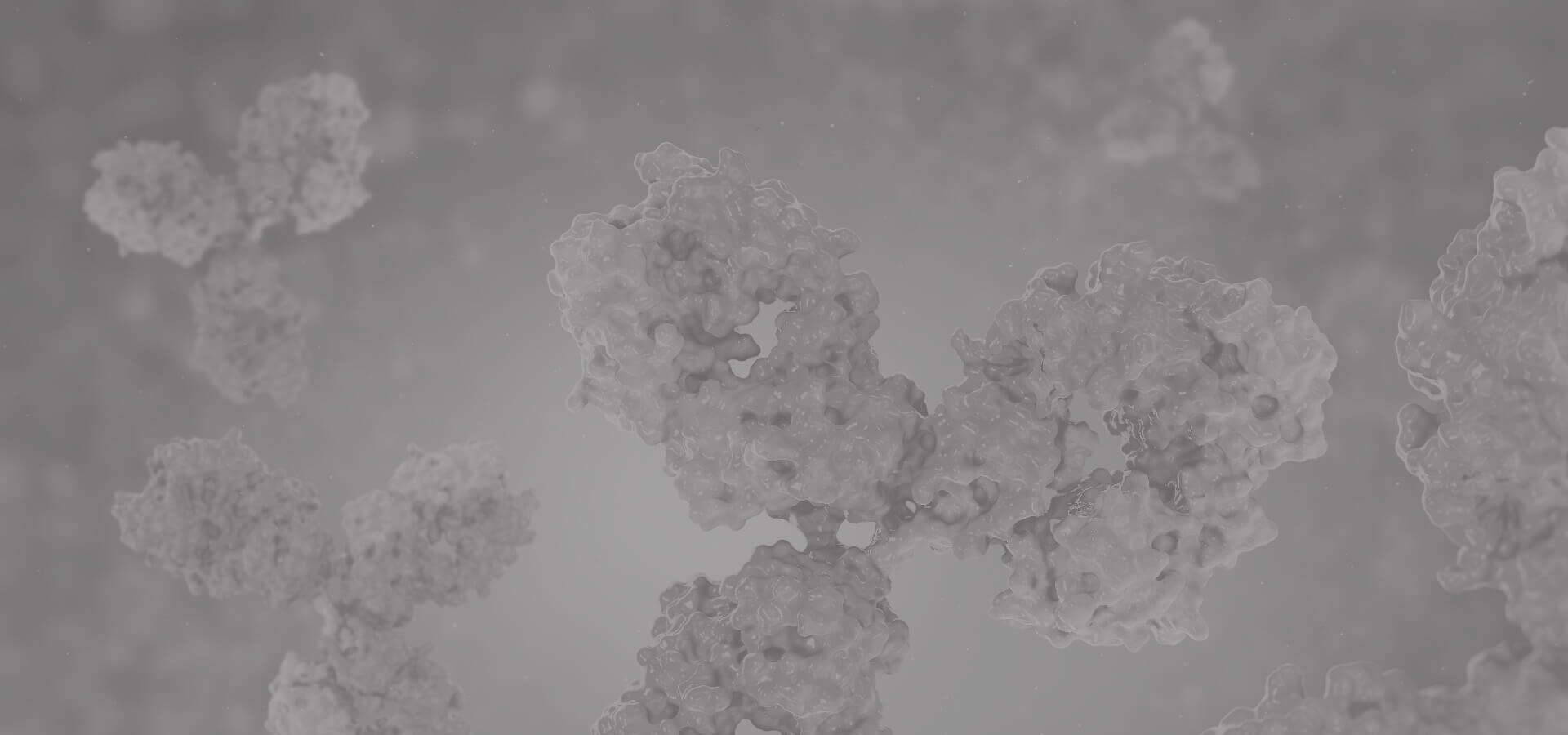F2
Coagulation factor II is proteolytically cleaved to form thrombin in the first step of the coagulation cascade which ultimately results in the stemming of blood loss. F2 also plays a role in maintaining vascular integrity during development and postnatal life. Peptides derived from the C-terminus of this protein have antimicrobial activity against E. coli and P. aeruginosa. Mutations in F2 lead to various forms of thrombosis and dysprothrombinemia. Alternative splicing results in multiple transcript variants. [provided by RefSeq, Aug 2015]
Full Name
Coagulation Factor II, Thrombin
Research Area
Thrombin, which cleaves bonds after Arg and Lys, converts fibrinogen to fibrin and activates factors V, VII, VIII, XIII, and, in complex with thrombomodulin, protein C. Functions in blood homeostasis, inflammation and wound healing.
Biological Process
Acute-phase response Source: UniProtKB-KW
Antimicrobial humoral immune response mediated by antimicrobial peptide Source: UniProtKB
Blood coagulation Source: ProtInc
Cell surface receptor signaling pathway Source: BHF-UCL
Cytolysis by host of symbiont cells Source: UniProtKB
Fibrinolysis Source: UniProtKB
Multicellular organism development Source: ProtInc
Negative regulation of astrocyte differentiation Source: BHF-UCL
Negative regulation of cytokine production involved in inflammatory response Source: UniProtKB
Negative regulation of fibrinolysis Source: BHF-UCL
Negative regulation of platelet activation Source: BHF-UCL
Negative regulation of proteolysis Source: BHF-UCL
Neutrophil-mediated killing of gram-negative bacterium Source: UniProtKB
Platelet activation Source: BHF-UCL
Positive regulation of blood coagulation Source: BHF-UCL
Positive regulation of cell growth Source: Ensembl
Positive regulation of cell population proliferation Source: Ensembl
Positive regulation of collagen biosynthetic process Source: BHF-UCL
Positive regulation of lipid kinase activity Source: BHF-UCL
Positive regulation of phosphatidylinositol 3-kinase signaling Source: Ensembl
Positive regulation of phospholipase C-activating G protein-coupled receptor signaling pathway Source: BHF-UCL
Positive regulation of protein localization to nucleus Source: BHF-UCL
Positive regulation of protein phosphorylation Source: BHF-UCL
Positive regulation of reactive oxygen species metabolic process Source: UniProtKB
Positive regulation of receptor signaling pathway via JAK-STAT Source: BHF-UCL
Positive regulation of release of sequestered calcium ion into cytosol Source: BHF-UCL
Proteolysis Source: ProtInc
Regulation of blood coagulation Source: UniProtKB
Regulation of cell shape Source: Ensembl
Regulation of cytosolic calcium ion concentration Source: BHF-UCL
Response to wounding Source: BHF-UCL
Antimicrobial humoral immune response mediated by antimicrobial peptide Source: UniProtKB
Blood coagulation Source: ProtInc
Cell surface receptor signaling pathway Source: BHF-UCL
Cytolysis by host of symbiont cells Source: UniProtKB
Fibrinolysis Source: UniProtKB
Multicellular organism development Source: ProtInc
Negative regulation of astrocyte differentiation Source: BHF-UCL
Negative regulation of cytokine production involved in inflammatory response Source: UniProtKB
Negative regulation of fibrinolysis Source: BHF-UCL
Negative regulation of platelet activation Source: BHF-UCL
Negative regulation of proteolysis Source: BHF-UCL
Neutrophil-mediated killing of gram-negative bacterium Source: UniProtKB
Platelet activation Source: BHF-UCL
Positive regulation of blood coagulation Source: BHF-UCL
Positive regulation of cell growth Source: Ensembl
Positive regulation of cell population proliferation Source: Ensembl
Positive regulation of collagen biosynthetic process Source: BHF-UCL
Positive regulation of lipid kinase activity Source: BHF-UCL
Positive regulation of phosphatidylinositol 3-kinase signaling Source: Ensembl
Positive regulation of phospholipase C-activating G protein-coupled receptor signaling pathway Source: BHF-UCL
Positive regulation of protein localization to nucleus Source: BHF-UCL
Positive regulation of protein phosphorylation Source: BHF-UCL
Positive regulation of reactive oxygen species metabolic process Source: UniProtKB
Positive regulation of receptor signaling pathway via JAK-STAT Source: BHF-UCL
Positive regulation of release of sequestered calcium ion into cytosol Source: BHF-UCL
Proteolysis Source: ProtInc
Regulation of blood coagulation Source: UniProtKB
Regulation of cell shape Source: Ensembl
Regulation of cytosolic calcium ion concentration Source: BHF-UCL
Response to wounding Source: BHF-UCL
Cellular Location
Extracellular space
Involvement in disease
Factor II deficiency (FA2D):
A very rare blood coagulation disorder characterized by mucocutaneous bleeding symptoms. The severity of the bleeding manifestations correlates with blood factor II levels.
Ischemic stroke (ISCHSTR):
A stroke is an acute neurologic event leading to death of neural tissue of the brain and resulting in loss of motor, sensory and/or cognitive function. Ischemic strokes, resulting from vascular occlusion, is considered to be a highly complex disease consisting of a group of heterogeneous disorders with multiple genetic and environmental risk factors.
Thrombophilia due to thrombin defect (THPH1):
The disease is caused by variants affecting the gene represented in this entry. A common genetic variation in the 3-prime untranslated region of the prothrombin gene is associated with elevated plasma prothrombin levels and an increased risk of venous thrombosis. A multifactorial disorder of hemostasis characterized by abnormal platelet aggregation in response to various agents and recurrent thrombi formation.
Pregnancy loss, recurrent, 2 (RPRGL2):
A common complication of pregnancy, resulting in spontaneous abortion before the fetus has reached viability. The term includes all miscarriages from the time of conception until 24 weeks of gestation. Recurrent pregnancy loss is defined as 3 or more consecutive spontaneous abortions.
A very rare blood coagulation disorder characterized by mucocutaneous bleeding symptoms. The severity of the bleeding manifestations correlates with blood factor II levels.
Ischemic stroke (ISCHSTR):
A stroke is an acute neurologic event leading to death of neural tissue of the brain and resulting in loss of motor, sensory and/or cognitive function. Ischemic strokes, resulting from vascular occlusion, is considered to be a highly complex disease consisting of a group of heterogeneous disorders with multiple genetic and environmental risk factors.
Thrombophilia due to thrombin defect (THPH1):
The disease is caused by variants affecting the gene represented in this entry. A common genetic variation in the 3-prime untranslated region of the prothrombin gene is associated with elevated plasma prothrombin levels and an increased risk of venous thrombosis. A multifactorial disorder of hemostasis characterized by abnormal platelet aggregation in response to various agents and recurrent thrombi formation.
Pregnancy loss, recurrent, 2 (RPRGL2):
A common complication of pregnancy, resulting in spontaneous abortion before the fetus has reached viability. The term includes all miscarriages from the time of conception until 24 weeks of gestation. Recurrent pregnancy loss is defined as 3 or more consecutive spontaneous abortions.
PTM
The gamma-carboxyglutamyl residues, which bind calcium ions, result from the carboxylation of glutamyl residues by a microsomal enzyme, the vitamin K-dependent carboxylase. The modified residues are necessary for the calcium-dependent interaction with a negatively charged phospholipid surface, which is essential for the conversion of prothrombin to thrombin.
N-glycosylated. N-glycan heterogeneity at Asn-121: Hex3HexNAc3 (minor), Hex4HexNAc3 (minor) and Hex5HexNAc4 (major). At Asn-143: Hex4HexNAc3 (minor) and Hex5HexNAc4 (major).
N-glycosylated. N-glycan heterogeneity at Asn-121: Hex3HexNAc3 (minor), Hex4HexNAc3 (minor) and Hex5HexNAc4 (major). At Asn-143: Hex4HexNAc3 (minor) and Hex5HexNAc4 (major).
View more
Anti-F2 antibodies
+ Filters
 Loading...
Loading...
Target: F2
Host: Mouse
Antibody Isotype: IgG2a
Specificity: Human
Clone: CBXF-0151
Application*: WB, IP
Target: F2
Host: Mouse
Antibody Isotype: IgG2b
Specificity: Human
Clone: CBXF-0150
Application*: E, IP, WB
Target: F2
Host: Mouse
Antibody Isotype: IgG2a
Specificity: Human
Clone: 5013
Application*: WB
Target: F2
Host: Mouse
Antibody Isotype: IgG2a
Specificity: Human
Clone: CBXF-2289
Application*: WB
Target: F2
Host: Mouse
Antibody Isotype: IgG2b
Specificity: Human
Clone: CBXF-3524
Application*: WB, IH
Target: F2
Host: Rabbit
Antibody Isotype: IgG
Specificity: Human
Clone: 9A1
Application*: E, IH
Target: F2
Host: Rabbit
Antibody Isotype: IgG
Specificity: Human
Clone: CBFYC-2632
Application*: WB, IP
Target: F2
Host: Rabbit
Antibody Isotype: IgG
Specificity: Mouse
Clone: CBXF-0156
Application*: E
Target: F2
Host: Rabbit
Antibody Isotype: IgG
Specificity: Mouse
Clone: CBXF-0152
Application*: WB
Target: F2
Host: Rabbit
Antibody Isotype: IgG
Specificity: Rat, Mouse
Clone: CBXF-2091
Application*: WB, IH
Target: F2
Host: Mouse
Antibody Isotype: IgG1
Specificity: Human, Mouse, Rat
Clone: CBXF-0159
Application*: WB
More Infomation
Hot products 
-
Rat Anti-EPO Recombinant Antibody (16) (CBMAB-E1578-FY)

-
Mouse Anti-ACTB Recombinant Antibody (V2-179553) (CBMAB-A0870-YC)

-
Mouse Anti-DMPK Recombinant Antibody (CBYCD-324) (CBMAB-D1200-YC)

-
Mouse Anti-APOA1 Monoclonal Antibody (CBFYR0637) (CBMAB-R0637-FY)

-
Mouse Anti-AQP2 Recombinant Antibody (G-3) (CBMAB-A3359-YC)

-
Rabbit Anti-AKT3 Recombinant Antibody (V2-12567) (CBMAB-1057-CN)

-
Mouse Anti-ASB9 Recombinant Antibody (1D8) (CBMAB-A0529-LY)

-
Mouse Anti-CAPZB Recombinant Antibody (CBYY-C0944) (CBMAB-C2381-YY)

-
Mouse Anti-ADIPOR1 Recombinant Antibody (V2-179982) (CBMAB-A1368-YC)

-
Mouse Anti-BBS2 Recombinant Antibody (CBYY-0253) (CBMAB-0254-YY)

-
Mouse Anti-AKT1 Recombinant Antibody (V2-180546) (CBMAB-A2070-YC)

-
Mouse Anti-Acetyl SMC3 (K105/K106) Recombinant Antibody (V2-634053) (CBMAB-AP052LY)

-
Mouse Anti-CHRNA9 Recombinant Antibody (8E4) (CBMAB-C9161-LY)

-
Mouse Anti-DLL4 Recombinant Antibody (D1090) (CBMAB-D1090-YC)

-
Mouse Anti-CD24 Recombinant Antibody (ALB9) (CBMAB-0176CQ)

-
Mouse Anti-BACE1 Recombinant Antibody (61-3E7) (CBMAB-1183-CN)

-
Mouse Anti-COL12A1 Recombinant Antibody (CBYY-C3117) (CBMAB-C4560-YY)

-
Mouse Anti-CAT Recombinant Antibody (724810) (CBMAB-C8431-LY)

-
Mouse Anti-ARIH1 Recombinant Antibody (C-7) (CBMAB-A3563-YC)

-
Mouse Anti-CCS Recombinant Antibody (CBFYC-1093) (CBMAB-C1150-FY)

For Research Use Only. Not For Clinical Use.
(P): Predicted
* Abbreviations
- AActivation
- AGAgonist
- APApoptosis
- BBlocking
- BABioassay
- BIBioimaging
- CImmunohistochemistry-Frozen Sections
- CIChromatin Immunoprecipitation
- CTCytotoxicity
- CSCostimulation
- DDepletion
- DBDot Blot
- EELISA
- ECELISA(Cap)
- EDELISA(Det)
- ESELISpot
- EMElectron Microscopy
- FFlow Cytometry
- FNFunction Assay
- GSGel Supershift
- IInhibition
- IAEnzyme Immunoassay
- ICImmunocytochemistry
- IDImmunodiffusion
- IEImmunoelectrophoresis
- IFImmunofluorescence
- IGImmunochromatography
- IHImmunohistochemistry
- IMImmunomicroscopy
- IOImmunoassay
- IPImmunoprecipitation
- ISIntracellular Staining for Flow Cytometry
- LALuminex Assay
- LFLateral Flow Immunoassay
- MMicroarray
- MCMass Cytometry/CyTOF
- MDMeDIP
- MSElectrophoretic Mobility Shift Assay
- NNeutralization
- PImmunohistologyp-Paraffin Sections
- PAPeptide Array
- PEPeptide ELISA
- PLProximity Ligation Assay
- RRadioimmunoassay
- SStimulation
- SESandwich ELISA
- SHIn situ hybridization
- TCTissue Culture
- WBWestern Blot

Online Inquiry







